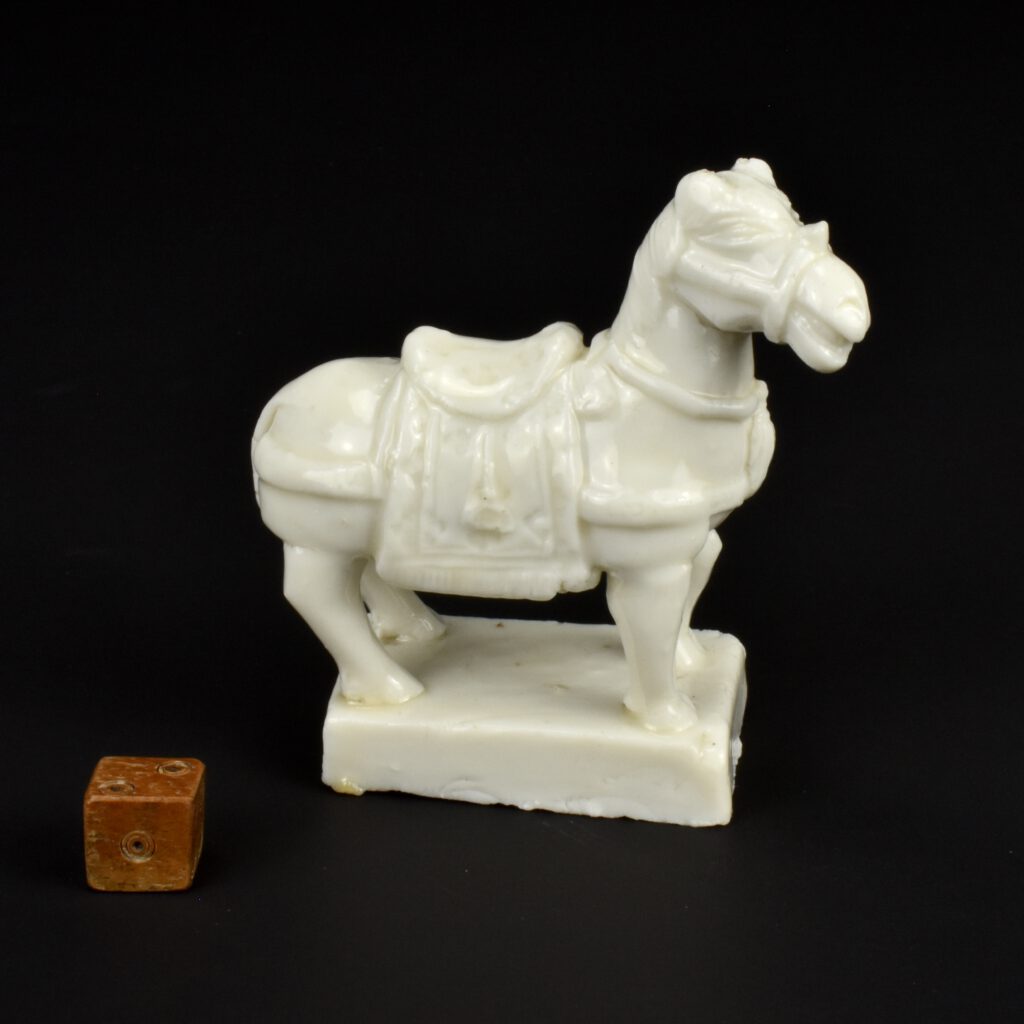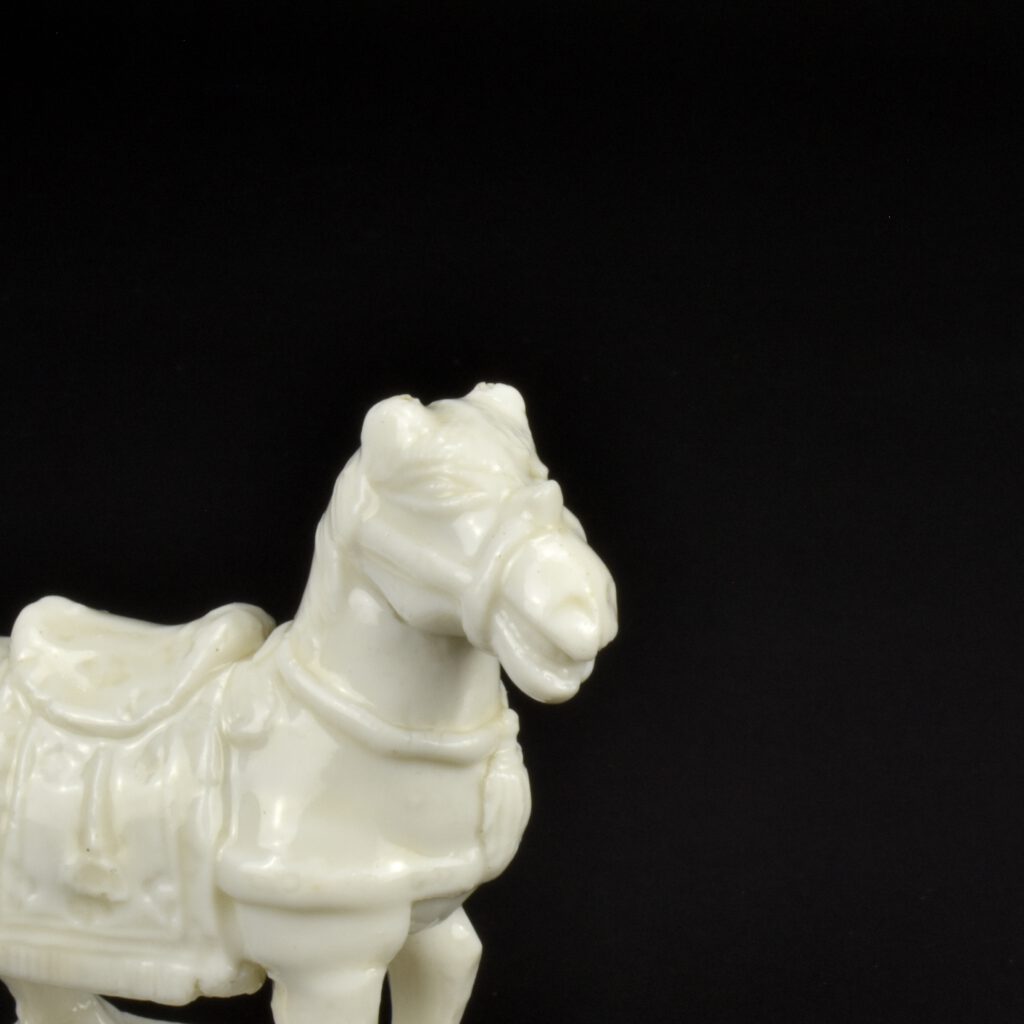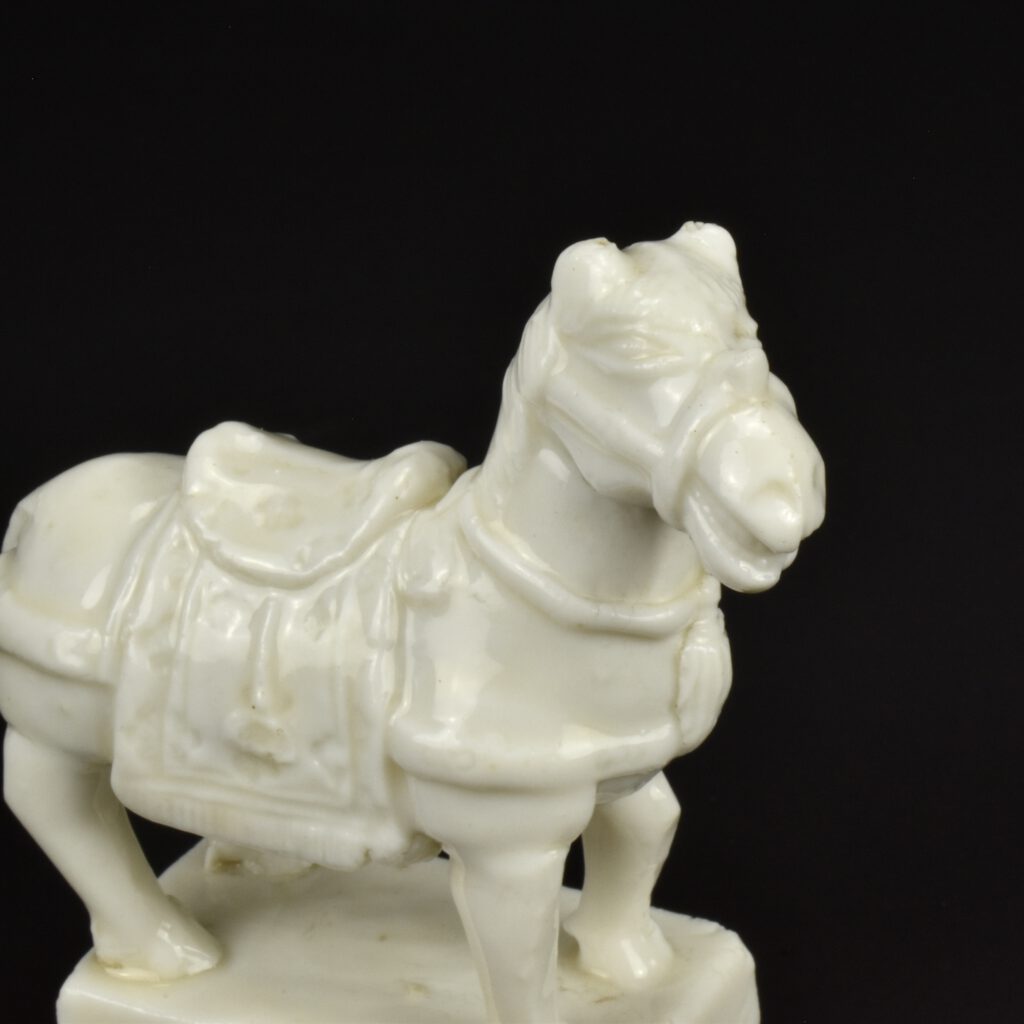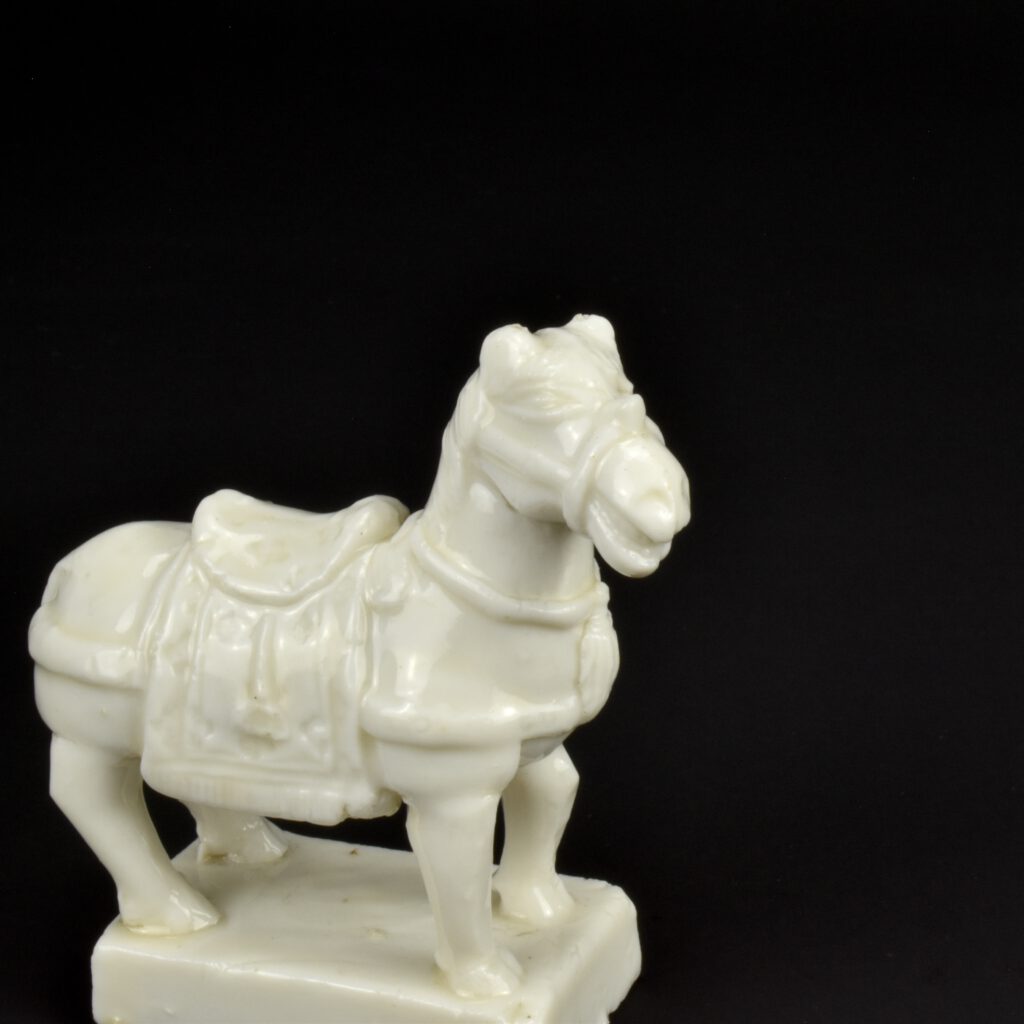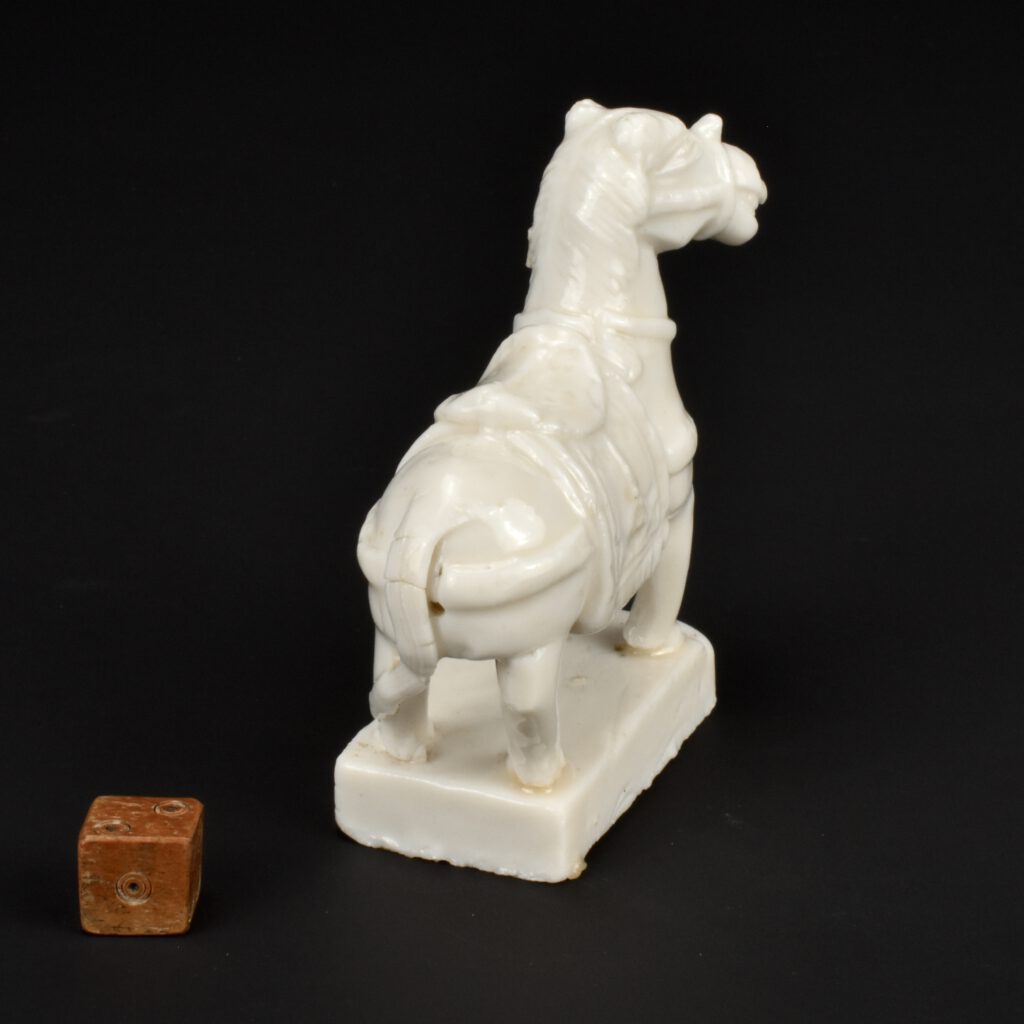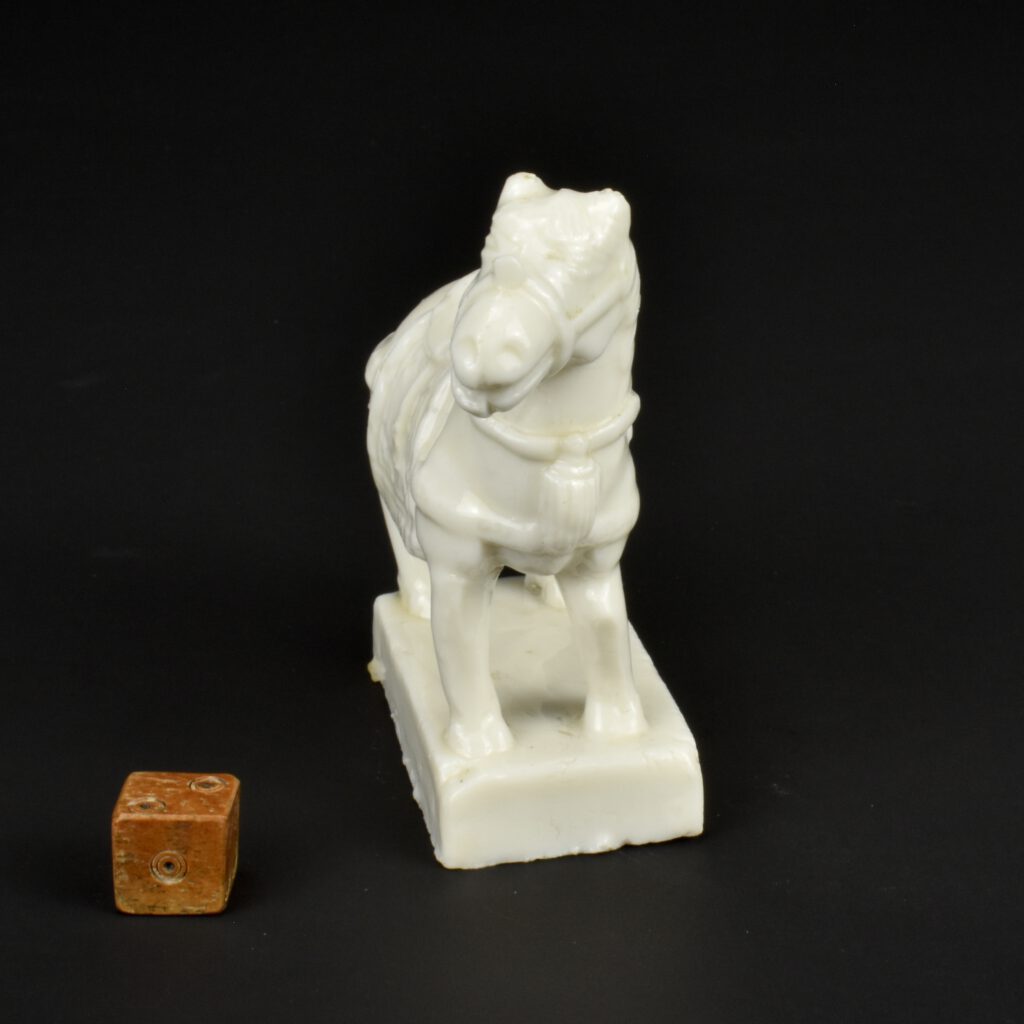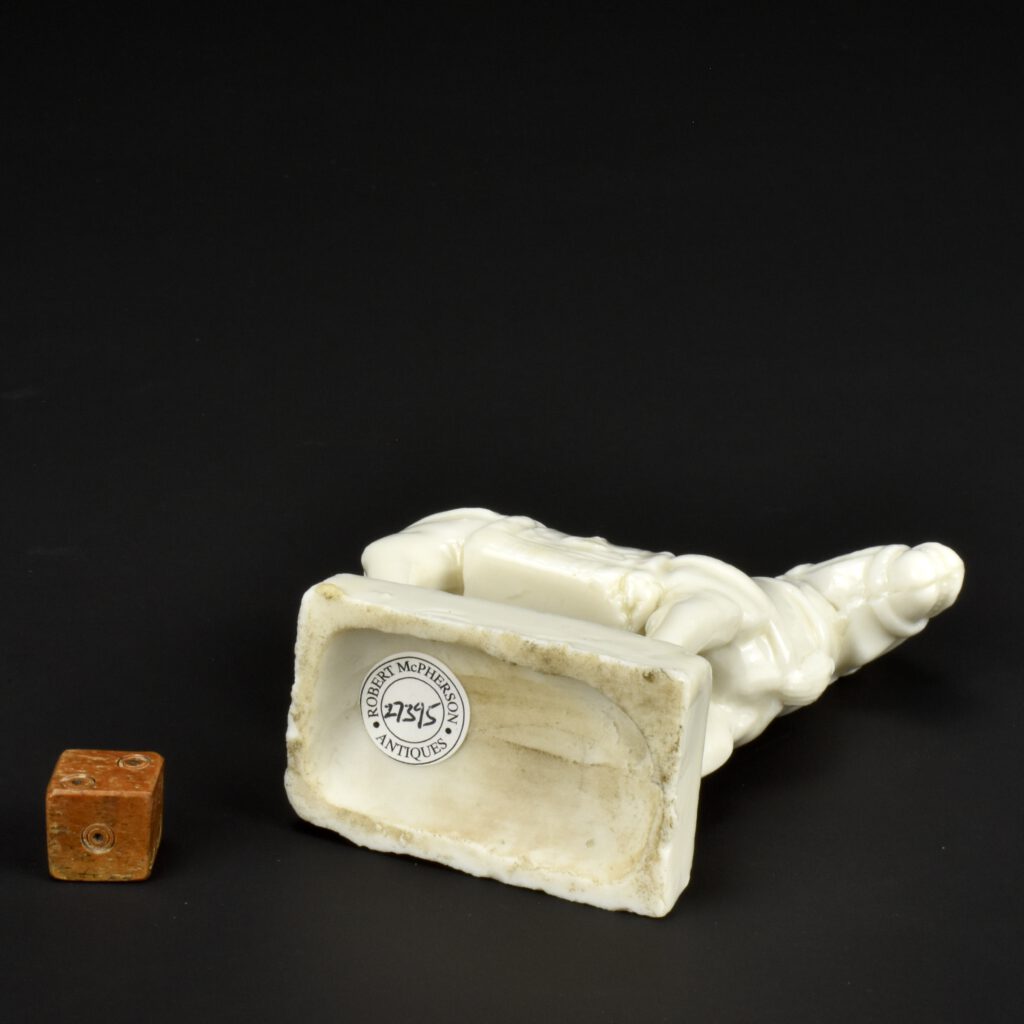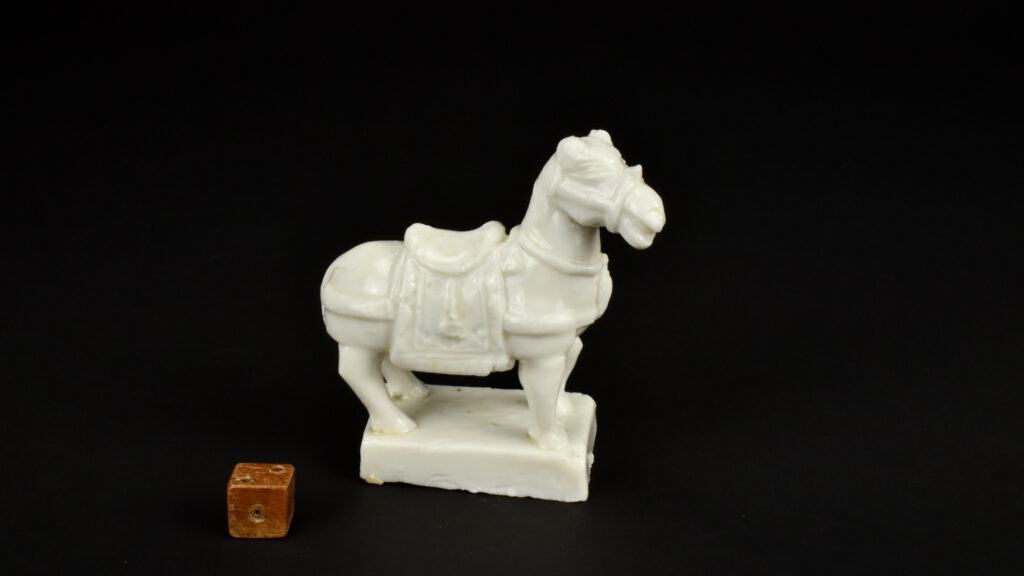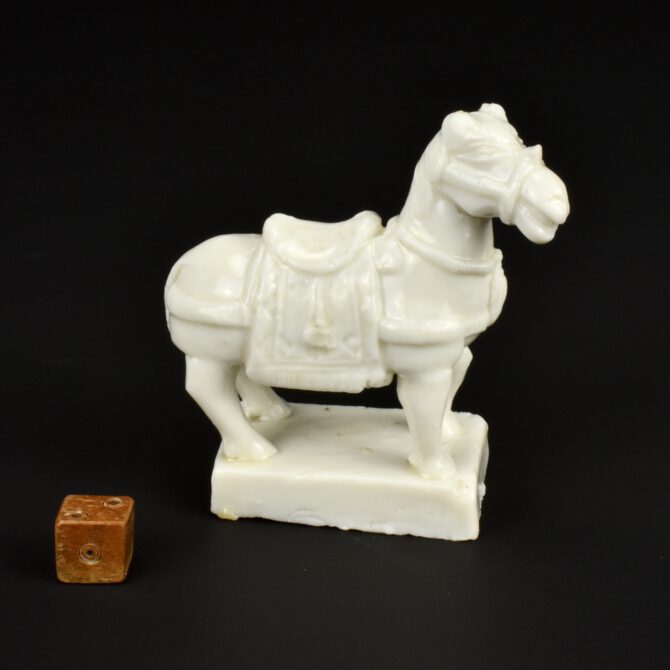
A Kangxi Blanc de Chine Porcelain Model of a Horse
A Kangxi Blanc de Chine Porcelain Model of a Horse, Dehua Kilns c.1690-1710. This horse has allot of crisp moulded detail and the pieces is bright with a clear glaze. It is shown with its tack; stirrups, bridles, halters, reins, bits, harnesses etc. The horse was made using several moulds and luted together, with the addition of some hand modelled clay, for example, the tail and reins. The records of the Dashwood sale in September 1703, an English Supra-cargo, include 10,800 `square toys` (seals), the other 5,400 `toys` were models of animals, `men on beasts` and the 490 `small white dogs` were priced at 1d each (Geoffrey A. Godden, see references). Models such as the present example were luted together from moulded sections. In 18th century England the people who carried out this process were called ‘repairers’, indeed the process is similar to repairing broken ceramics, except that you use clay as your glue. Wet clay was used to stick the leather-hard moulded sections together, the process is referred to as luting from the Latin Lutum meaning mud or clay. To help made sure the join will be as strong as possible the edges of the clay sections are scored, so the luting material really binds with the joining surfaces, especially when firm pressure is applied. The luted joins are then cleaned, smoothed down, so the piece looks seamless.
See Below For More Photographs and Information.
SOLD
- Condition
- In excellent condition. Firing fault ; to the tail, other very minor faults.
- Size
- Height 8.2 cm (3 1/4 inches)
- Provenance
- N/A
- Stock number
- 27395
- References
- For other Blanc de Chine models or 'toys' see : Oriental Export Market Porcelain and its Influence on European Wares (Geoffrey A. Godden, Granada, 1979.ISBN 0246110570) page 272, plate 200. Information from Godden`s book ; The records of the Dashwood sale in September 1703, an English Supra-cargo, include 10,800 `square toys` (seals), the other 5,400 `toys` were models of animals, `men on beasts` and the 490 `small white dogs` were priced at 1d each.
Information
Blanc de Chine Porcelain :
The porcelain known in the West as Blanc de Chine was produced 300 miles south of the main Chinese kiln complex of Jingdezhen. The term refers to the fine grain white porcelain made at the kilns situated near Dehua in the coastal province of Fujian, these kilns also produced other types of porcelain. A rather freely painted blue and white ware, porcelain with brightly coloured `Swatow` type enamels as well as pieces with a brown iron-rich glaze. However it is the white blanc de Chine wares that have made these kilns famous. The quality and colour achieved by the Dehua potters was partly due to the local porcelain stone, it was unusually pure and was used without kaolin being added. This, combined with a low iron content and other chemical factors within the body as well as the glaze, enabled the potters to produce superb ivory-white porcelain.
Kangxi Blanc de Chine Horses
Robert McPherson - Sold Archive 25668 and 25667.
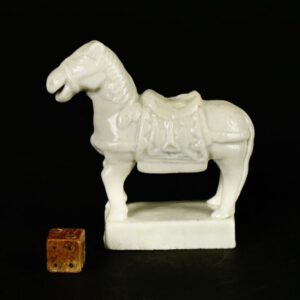
Models such as the present example were luted together from moulded sections. In 18th century England the people who carried out this process were called ‘repairers’, indeed the process is similar to repairing broken ceramics, except that you use clay as your glue. Wet clay was used to stick the leather-hard moulded sections together, the process is referred to as luting from the Latin Lutum meaning mud or clay. To help made sure the join will be as strong as possible the edges of the clay sections are scored, so the luting material really binds with the joining surfaces, especially when firm pressure is applied. The luted joins are then cleaned, smoothed down, so the piece looks seamless.
SOLD
Condition
There is a small crack to the neck of the horse.
Size
Height 8.2 cm (3 1/4 inches)
Provenance
From a Private English Collection of Blanc de Chine Porcelain.
Stock number
25668
References
For other Blanc de Chine models or 'toys' see : Oriental Export Market Porcelain and its Influence on European Wares (Geoffrey A. Godden, Granada, 1979.ISBN 0246110570) page 272, plate 200. Information from Godden`s book ; The records of the Dashwood sale in September 1703, an English Supra-cargo, include 10,800 `square toys` (seals), the other 5,400 `toys` were models of animals, `men on beasts` and the 490 `small white dogs` were priced at 1d each.
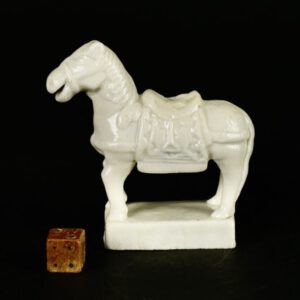
Models such as the present example were luted together from moulded sections. In 18th century England the people who carried out this process were called ‘repairers’, indeed the process is similar to repairing broken ceramics, except that you use clay as your glue. Wet clay was used to stick the leather-hard moulded sections together, the process is referred to as luting from the Latin Lutum meaning mud or clay. To help made sure the join will be as strong as possible the edges of the clay sections are scored, so the luting material really binds with the joining surfaces, especially when firm pressure is applied. The luted joins are then cleaned, smoothed down, so the piece looks seamless.
SOLD
Condition
In very good condition, part of a raised section of the bridles has a chip.
Size
Height 8.2 cm (3 1/4 inches)
Provenance
From a Private English Collection of Blanc de Chine Porcelain.
Stock number
25667
References
For other Blanc de Chine models or 'toys' see : Oriental Export Market Porcelain and its Influence on European Wares (Geoffrey A. Godden, Granada, 1979.ISBN 0246110570) page 272, plate 200. Information from Godden`s book ; The records of the Dashwood sale in September 1703, an English Supra-cargo, include 10,800 `square toys` (seals), the other 5,400 `toys` were models of animals, `men on beasts` and the 490 `small white dogs` were priced at 1d each.
Two Very Rare Horses From The
Nanking Cargo
Qianlong Period c.1751, Jingdezhen Kilns.
Sold individually at Christie’s Amsterdam in 1986
Robert McPherson Sold Archive 27218
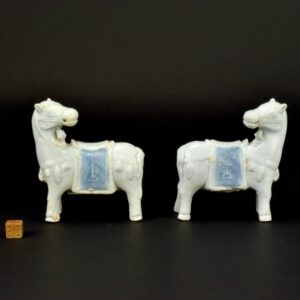
See Below For More Photographs and References.
SOLD
Condition
In very good condition, a small amount of barnacle growth, the glaze is in good condition for shipwreck porcelain.
Size
Height 10 cm (4 inches). Length 9.5 cm (3 3/4 inches).
Provenance
Illustrated in the auction catalogue : Nanking Cargo Chinese Export Porcelain and Gold, Christie's Amsterdam from 28th April to 2 May 1986. 272 pages, with 4785 lots of ceramics. The ponies were sold individually, lots 5748-5752. These five ponies which sold for different prices, on average two came to €9,896 (£8,638).
Stock number
27218
References
Illustrated in the auction catalogue : Nanking Cargo Chinese Export Porcelain and Gold, Christie's Amsterdam from 28th April to 2 May 1986. 272 pages, with 4785 lots of ceramics. The ponies were sold individually, lots 5748-5752. Ponies of from this group are Illustrated 'The Geldermalsen, History and Porcelain' (Dr. Christiaan Jörg's book, Kemper Publishers; 1st edition January 1, 1986. ISBN 978-9070295295) page 157. They are also illustrated in : The Nanking Cargo, Michael Hatcher with Anthony Thorncroft (Hamish Hamilton; First UK Edition January 1, 1987. ISBN 978-0241121177) page 134. For a similar model but Kangxi, Blanc de Chine porcelain see below.

